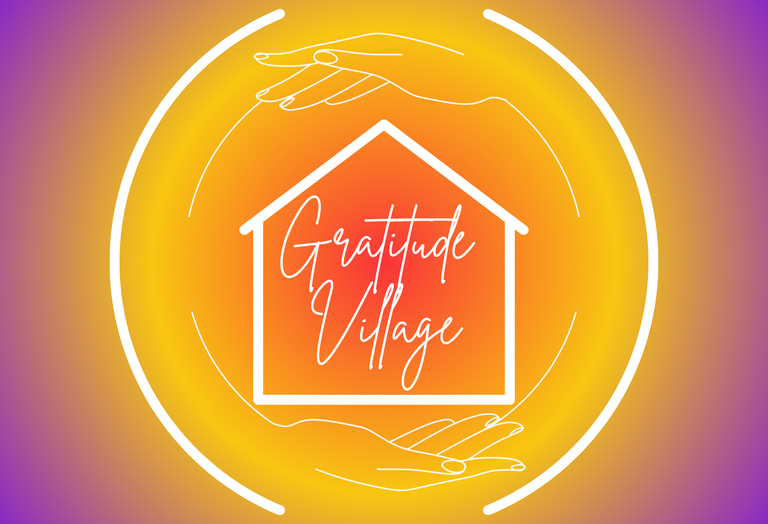Happy Holidays from Everyone at Gratitude Village!
The Role of Consensus in Cohousing: How Decisions Are Made
In this post we explore the decision-making processes in cohousing communities, focusing on consensus-based governance and the importance of collaboration.
Gratitude Village
10/20/20245 min read


The Role of Consensus in Cohousing: How Decisions Are Made
In a world where decisions are often made by a majority vote, with winners and losers, the cohousing movement offers a different approach: consensus decision-making. This process, which emphasizes collective agreement and collaboration, is central to the functioning of most cohousing communities. Rather than simply tallying votes and accepting a majority decision, consensus seeks to find solutions that everyone can agree upon—or at least live with. This blog explores the role of consensus in cohousing, highlighting its benefits, challenges, and the ways it fosters a stronger, more connected community.
1. What Is Consensus Decision-Making?
Consensus decision-making is a process that seeks the agreement of all participants. In contrast to traditional decision-making methods, such as voting, where a simple majority wins, consensus aims to include everyone’s voice in the decision. The goal is not just to reach a decision but to reach one that everyone can support or at least accept.
In a cohousing context, consensus is used to make a wide range of decisions, from how the community should be governed to how resources are allocated.
The process typically involves several steps:
1. Proposal: A member of the community presents an idea or proposal.
2. Discussion: The proposal is discussed, and concerns or questions are raised. This is a collaborative process where members work together to refine the idea.
3. Modification: The proposal may be modified to address concerns and improve the likelihood of consensus.
4. Testing for Consensus: The group checks to see if there is unanimous agreement. If not, further discussion or modification occurs.
5. Decision: If all members agree, the decision is made. If not, the group continues to work until a solution that everyone can accept is found.
This process can take more time than other decision-making methods, but it ensures that every voice is heard and that the final decision reflects the collective will of the community and considers the “common good” over the will of any single individual or group of individuals.
2. Benefits of Consensus in Cohousing
The consensus process offers several unique benefits that are particularly valuable in a cohousing setting. These benefits contribute to the overall health and harmony of the community, making consensus an essential part of cohousing life.
a. Inclusivity and Empowerment
One of the most significant advantages of consensus is that it empowers all community members to participate in the decision-making process. Unlike majority rule, where a minority may feel overlooked or disregarded, consensus ensures that everyone has a voice. This inclusivity fosters a sense of ownership and responsibility among residents, as they know their opinions matter and that they have a direct impact on the community’s direction.
b. Stronger Community Bonds
The process of reaching consensus requires open communication, active listening, and collaboration. These elements are essential for building trust and understanding among community members. As residents work together to find common ground, they develop deeper relationships and a stronger sense of community. The result is a more cohesive group that is better equipped to handle challenges and conflicts.
c. Better Decision Quality
Because consensus requires thorough discussion and consideration of all perspectives, the decisions made through this process are often of higher quality. By incorporating diverse viewpoints and addressing concerns upfront, the community is more likely to arrive at well-rounded and sustainable solutions what Dr. Stephen Covey referred to as win-win. This careful consideration also helps to prevent future conflicts, as potential issues are identified and resolved during the decision-making process.
d. Increased Commitment to Decisions
When a decision is made through consensus, all members of the community have agreed to it—or at least agreed not to block it. This buy-in means that residents are more likely to support and implement the decision, leading to higher levels of commitment and follow-through. In contrast, decisions made by majority vote can leave some members feeling resentful or disconnected, which can undermine the community’s cohesion.
3. Challenges of Consensus Decision-Making
While the benefits of consensus are clear, the process is not without its challenges. Cohousing communities that use consensus must be prepared to navigate these difficulties to maintain the integrity of the process and the health of the community.
a. Time-Consuming Process
One of the most common criticisms of consensus decision-making is that it can be time-consuming. Reaching an agreement that satisfies everyone often requires lengthy discussions, multiple meetings, and significant patience. In a busy world where time is a precious resource, this can be a drawback. However, many cohousing communities view this investment of time as worthwhile, as it leads to stronger, more thoughtful decisions and a more united community.
b. Risk of Groupthink
Consensus decision-making can sometimes lead to groupthink, where the desire for harmony and agreement results in poor decision-making. In a close-knit community, members may be reluctant to voice dissenting opinions, fearing conflict or the disruption of group cohesion. This can lead to the adoption of decisions that are not fully considered or that do not reflect the true feelings of all members. To counteract this, cohousing communities must actively encourage open and honest communication, ensuring that all voices are heard and valued.
c. Power Dynamics
While consensus aims to be an egalitarian process, power dynamics can still influence the outcome. In any group, some individuals may have more influence due to their personality, experience, or social standing within the community. These dynamics can affect the consensus process, making it harder for less dominant voices to be heard. Cohousing communities need to be aware of these dynamics and work to create a space where everyone feels comfortable contributing to the discussion.
d. Difficulty in Reaching Agreement
In some cases, reaching consensus may be challenging or even impossible, particularly on contentious issues. When consensus cannot be achieved, the community must decide how to proceed. Some cohousing communities have fallback decision-making methods, such as supermajority voting, to use in these situations. However, relying too often on these alternatives can undermine the consensus process and the sense of unity it fosters.
4. Strategies for Effective Consensus Decision-Making
To make consensus work effectively, cohousing communities often adopt certain strategies and practices. These include:
Facilitation: Using skilled facilitators to guide discussions, keep the process on track, and ensure that all voices are heard.
Clear Guidelines: Establishing clear guidelines for how the consensus process will work, including how decisions will be made if consensus cannot be reached.
Training: Providing training for community members in communication, conflict resolution, and decision-making skills.
Flexibility: Being flexible in the approach to consensus, recognizing when a different decision-making method may be necessary while maintaining the spirit of collaboration and inclusivity.
Conclusion
Consensus decision-making is more than just a method for making choices—it's a core value and practice in cohousing that reflects the community’s commitment to inclusivity, collaboration, and shared responsibility. While the process has its challenges, the benefits of stronger community bonds, better decision quality, and increased commitment make it a valuable tool for cohousing communities. By embracing consensus, cohousing residents can create a living environment that is not only democratic and fair but also deeply connected and resilient. For those who value community and collective empowerment, consensus is not just a decision-making process—it’s a way of life.
COMMUNITY
Join us in embracing nature, diversity and connection.
Sustainability
DIVERSITY
info@gratitudevillageco.com
720-689-4821
© 2025. All rights reserved.
AFFORDABILITY
Gratitude Village Inc. is a 501(c)3 charitable corporation that values diversity, equity, and inclusion as essential to our mission
Subscribe to our Substack
Refund Policy




Gratitude Village is a Proud Member of these organizations
